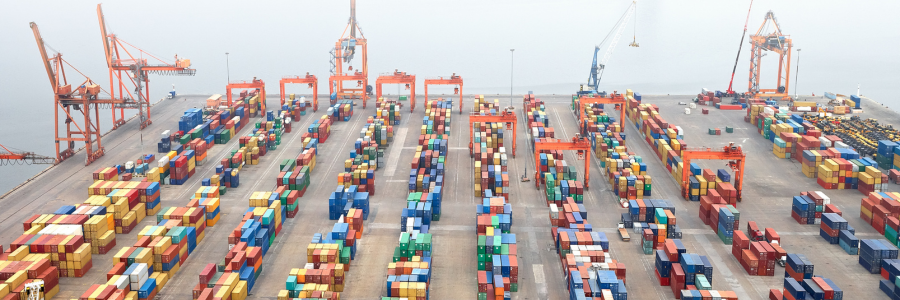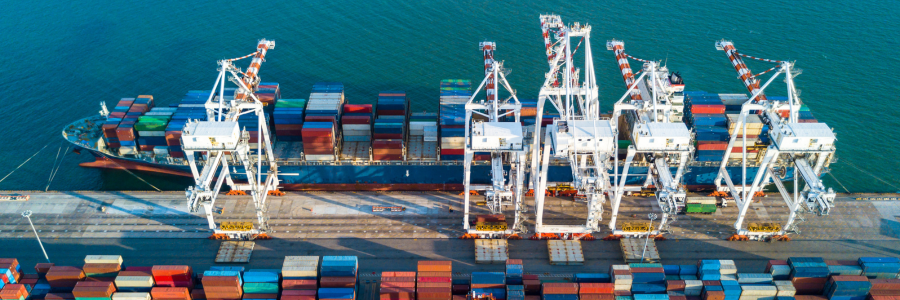As we move into 2024, the freight forwarding industry is gearing up to navigate through a maze of capacity challenges. The capacity issues span across various modes of transport, including air, sea, road, and rail, impacting global supply chains at different levels.
This blog will delve into the critical capacity challenges freight forwarders are expected to face in 2024, their implications on global trade, and the strategies to mitigate these hurdles.

Global Economic Dynamics and Capacity Strains
The economic rebound post-pandemic has seen a surge in consumer demand, leading to increased freight volumes. However, this resurgence is a double-edged sword, as the spike in demand puts immense pressure on the existing freight capacities. Freight forwarders are at the heart of this challenge, trying to balance the rising demand with the available resources. The global economic dynamics, including trade wars, geopolitical tensions, and economic sanctions, further complicate the scenario by restricting the flow of goods in certain regions, thereby straining the available capacity even more.
Challenges Across Air Freight and Sea Frieght
Air Freight:
In the week leading up to the Lunar New Year, air cargo volumes and rates from China to North America and Europe experienced a significant surge, with shipments to North America seeing a 14% increase and to Europe an 8% rise compared to the previous week. This increase is partially linked to the seasonal demand spike typically observed ahead of the Lunar New Year, as well as to disruptions in container shipping within the Red Sea. These disruptions have prompted a shift in some cargo from sea freight to sea-air shipments, especially through the Gulf, and to a lesser extent, via the US West Coast.
Quantifying the precise impact of Red Sea disruptions on air freight has been challenging due to the overlap with seasonal demand increases. It is anticipated that the full impact on air freight patterns, including any potential structural changes in cargo flows, will only become apparent after the Lunar New Year. Global air cargo demand is expected to diminish post-holiday, with the shift from ocean to air due to Red Sea issues likely to decrease as ocean operations normalize. Additionally, the global air cargo sector is undergoing a broader transformation, marked by an increase in belly cargo space from Asia and a patchy recovery in cargo volumes. The International Air Transport Association (IATA) has noted a substantial rise in available air cargo capacity in the Asia-Pacific region in December, although demand growth has lagged behind this capacity increase. The outlook for the remainder of the year predicts a slow but steady improvement in demand, with rate declines expected to narrow gradually, but significant growth in air cargo rates is unlikely until 2025.

Sea Freight:
The maritime sector is navigating a complex landscape of capacity challenges, with global container capacity expected to increase by 10% despite a modest container volume growth of 3% to 4%. The Red Sea disruption, caused by security threats, has temporarily absorbed 6% to 7% of global capacity as carriers rerouted around Africa, but this is seen as a temporary measure. With the potential return to normalcy in Suez Canal transits, the industry faces an oversupply challenge, addressing it through strategies like idling, recycling ships, or altering new vessel orders. Last year’s significant addition of 2.2 million TEUs, mostly from ultra-large container ships, and the retirement of older vessels indicate a shift towards managing overcapacity more effectively.
Furthermore, the incoming fleet is increasingly environmentally focused, with about 85% of new capacity designed to run on alternative fuels like LNG, methanol, or hydrogen, highlighting a significant transition towards sustainable shipping practices. This shift is crucial for the industry's long-term sustainability and environmental responsibility, amidst the challenges of global disruptions and the need for strategic capacity management. As the industry prepares for these changes, the emphasis on innovation and strategic planning will be key to maintaining the resilience and efficiency of global supply chains in the face of evolving capacity dynamics and environmental regulations.

The Ripple Effect on Global Supply Chains
The capacity challenges in freight forwarding have a cascading effect on global supply chains. Delays, increased costs, and the unreliability of delivery schedules can disrupt production cycles, affecting businesses reliant on just-in-time inventory models. This scenario necessitates a strategic reevaluation of supply chain resilience, urging companies to diversify their logistics options and develop more robust contingency plans.
Strategies to Navigate Capacity Challenges
To mitigate these capacity challenges, freight forwarders and logistics companies are adopting a multi-pronged approach:
- Digital Transformation: Leveraging technology for better capacity management is crucial. Digital platforms like the 7ConNetwork Booking Platform, can offer real-time visibility into freight movements, enabling more efficient routing and allocation of resources. Artificial intelligence integrated into such platforms and machine learning can predict demand patterns, helping forwarders plan capacity more effectively.
- Collaboration and Partnerships: Forming alliances with other industry players like Premium Members of 7ConNetwork can help share capacity and resources, reducing the overall strain on the system. Collaborative platforms can facilitate the sharing of container space and consolidation of shipments, optimizing the available capacity.
- Diversification of Transport Modes: Utilizing a mix of transport modes can help mitigate the risks associated with capacity constraints in any single mode. Multimodal transport solutions can offer more flexibility and resilience to supply chains.
- Investment in Sustainability: As environmental regulations become stricter, investing in sustainable logistics solutions can future-proof businesses. This includes exploring alternative fuels, investing in eco-friendly vessels and vehicles, and optimizing green logistics networks like 7ConNetwork to reduce carbon footprints.
- Enhanced Planning and Forecasting: Advanced planning tools and better demand forecasting can help freight forwarders anticipate capacity needs and adjust their strategies accordingly. This proactive approach can minimize the impact of capacity constraints on delivery timelines and costs.
Conclusion
The capacity challenges facing freight forwarders in 2024 are multifaceted, stemming from a complex interplay of economic, regulatory, and environmental factors. As the industry navigates through these challenges, the focus on innovation, collaboration, and sustainability will be key to ensuring the resilience and efficiency of global supply chains.
By adopting strategic measures to overcome capacity constraints, freight forwarders can continue to play a crucial role in facilitating international trade, driving economic growth, and supporting businesses worldwide. The journey ahead may be fraught with challenges, but with the right strategies in place, the freight forwarding industry is well-equipped to navigate the turbulent waters of 2024 and beyond.
